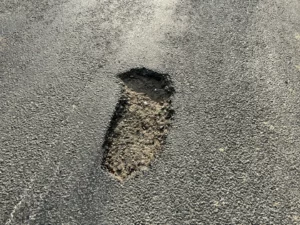A new report by the World Health Organisation has said air quality monitoring is key to improving air quality around the globe.
According to the organisation, environmental risks cause 12% of the global burden of disease, with air pollution ranking first.
In 2021, WHO issued updated and more stringent air quality guidelines to reflect adverse health effects at lower concentrations than previously recognized.
WHO has said that air quality monitoring is the first step for understanding a population’s exposure and taking action.
“Air Pollution is a major public and environmental health issue with serious threats to people’s wellbeing and our environment,” says Dr Maria Neira, Director, Department of Environment, Climate Change and Health, WHO. “Health impact assessment of air pollution and related interventions is the foundation for tackling air pollution efficiently, seriously and sustainably. This new report is key in supporting countries to get local data and measure air pollution exposure to protect people from the adverse impacts of dirty air.”
Every year, 7 million people die prematurely from exposure to air pollution. At the foundation of this mortality figure (SDG indicator 3.9.1) is the global estimate of ambient (or outdoor) air pollution exposure (SDG Indicator 11.6.2). This indicator is obtained from a global model, the Data Integration Model for Air Quality (DIMAQ), whose accuracy relies on the availability of local reference-grade monitors, which are a critical part of a comprehensive air quality management programme. In addition to their accuracy, reference-grade monitors enable the monitoring of long-term air pollution exposures that are critical for health studies and the evaluation of interventions or sectoral policies. They are also crucial for the objective evaluation of compliance with standards. Ideally, every country should have access to at least one reference-grade monitor, which open the door to many other air quality measurement methods.
While it is important to start somewhere, countries should balance their national priorities with available resources and employ a mixture of approaches to best address their air quality problems. Pivotal to the success of any air quality management programme is the awareness of the advantages and disadvantages of each approach: cost, technical complexity, outputs and the recognition that some methods require the prior presence of other measurement methods to be useful, said WHO.
Synthesising the knowledge of global experts from the Global Air Pollution and Health Technical Advisory Group, the new report ,Overview of methods to assess population exposure to ambient air pollution, presents a comparison of the strengths and weaknesses of individual measurement and modelling approaches. In addition, the publication highlights emerging methods such as machine learning and geostatistical data fusion methods, which combine air quality measurements and simulation modelling into a statistical model. The methods highlighted can be used locally, provincially and nationally to monitor multiple air pollutants and track progress resulting from air pollution reduction policies.
Policy-makers and government officials can use the report to assess their country’s baseline air quality levels as well as to develop plans for air quality monitoring and data management. National and local authorities responsible for protecting public health can leverage its content in their fight against the adverse effects of air pollution. Additionally, low- and middle-income countries can find methods to assess their population exposure to air pollution that are best suited to their country’s social, economic and environmental conditions, according to WHO.
However, no single monitoring method can address the entirety of a country’s air quality problem, and nations may want to employ a mixture of measurements and modelling methods to address their local air quality issues while balancing their national priorities and resource availability. Ultimately, multiple methods are needed for a comprehensive air quality management knowledge base and capability. Countries are encouraged to use as many of these approaches as needed, based on their circumstances and capabilities, said WHO.




























